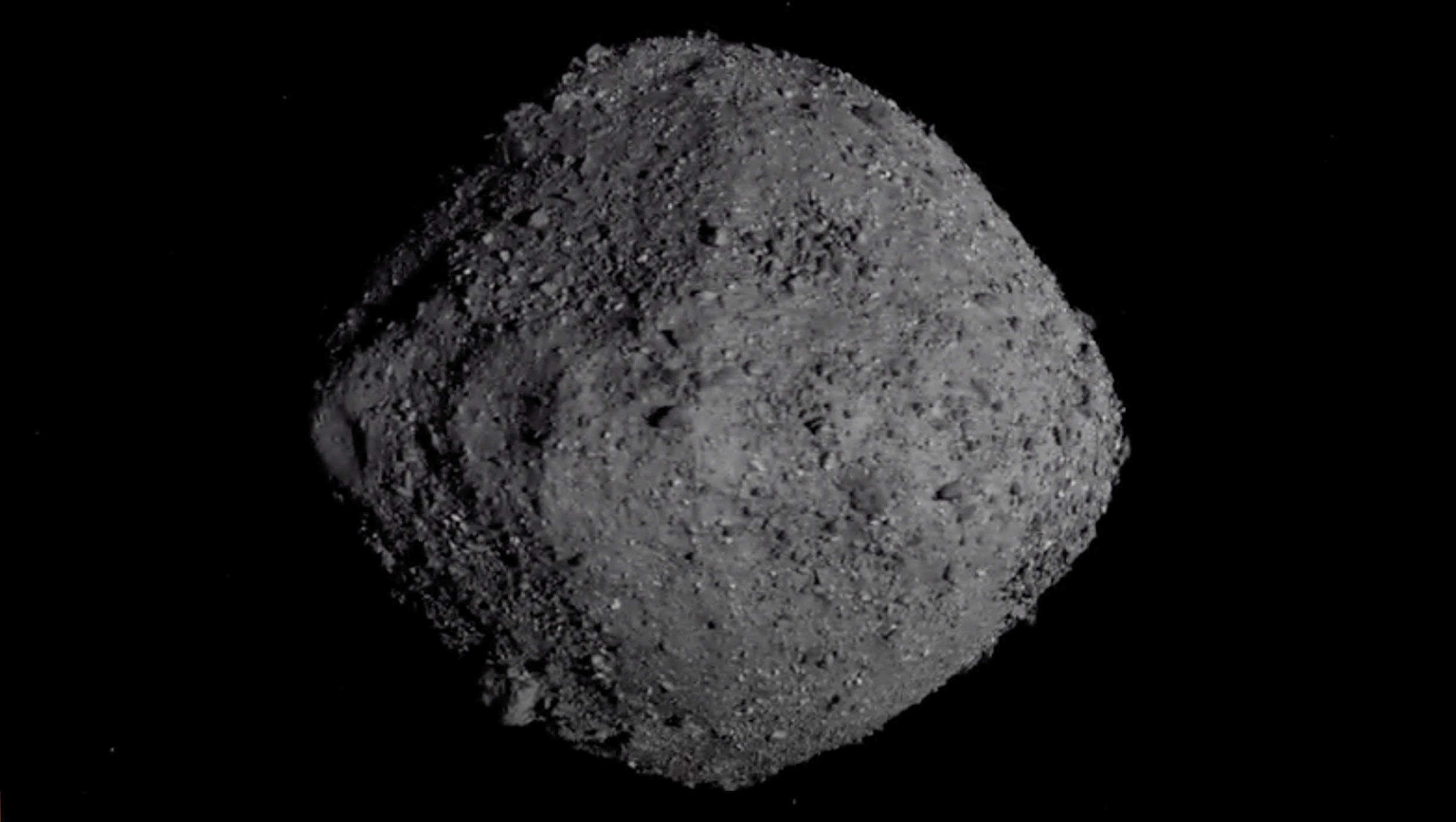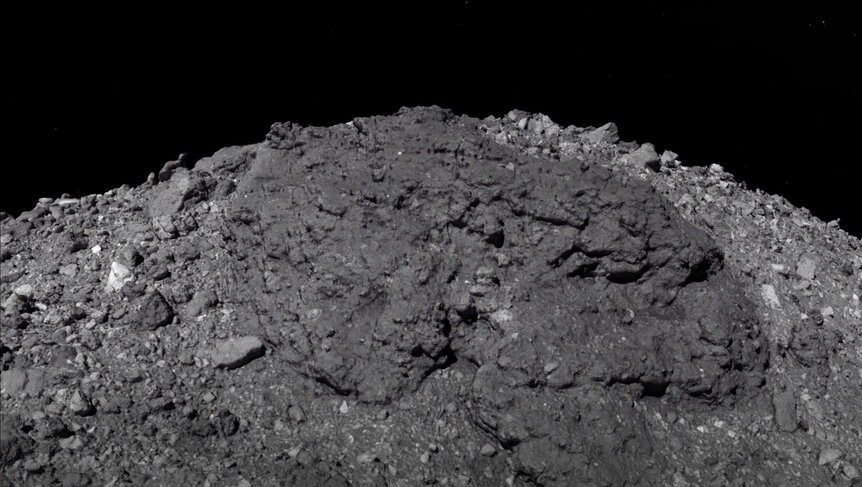Create a free profile to get unlimited access to exclusive videos, sweepstakes, and more!
How life spawned on Earth (and maybe elsewhere) might be just one of the secrets asteroid Bennu is hiding

Asteroid Bennu might appear to be just another piece of space rock floating out there, but there could be some mind-blowing finds waiting to be revealed by NASA’s OSIRIS-REx mission.
Who knows what we could find out from a pristine piece of a carbon-rich asteroid that supposedly once had water. There is the possibility that Bennu was once part of a larger asteroid that may or may not have hosted some sort of life forms, but before you say “aliens,” there are other fascinating aspects of this asteroid that OSIRIS REx will seek to find out when it makes its first attempt at collecting samples from the Nightingale crater on Oct. 20. Some regolith has barely been exposed to the harsh cosmic environment, meaning that there could be pristine material there that has remained virtually untouched for billions of years. It may even unlock secrets about the birth of universe.
It also could mean that any part of Bennu’s parent asteroid that crashed into early Earth may have brought at least some of the ingredients for life, and maybe even primitive microbes, with it.
“Return of pristine carbonaceous material is the primary objective of the mission. We are planning an extensive sample analysis campaign to characterize organic and other carbon-bearing material,” OSIRIS REx principal investigator Dante Lauretta told SYFY WIRE. “The goal is to understand the role that these kinds of asteroids may have played in delivering the ‘seeds of life’ to Earth and elsewhere in the solar system.”
Bennu’s parent asteroid is thought to have formed over 4.5 billion years ago. There are bright veins on Bennu itself that scientists believe to have formed from carbonates — ions that are made of one carbon and three oxygen atoms — or substances containing carbonates. The carbonates that have been observed on some of its geological features could mean there was once water where they formed. They are thought to have originated from hydrothermal systems much like those in hot springs or on the ocean floor on Earth, where water that is heated by magma in the mantle gushes through the crust and provides heat that allows life to thrive around it in an otherwise forbidding environment. Though the rock Bennu broke off from has long since been destroyed, water could still have left behind evidence that it was there.
Lauretta and his team were also able to tell that there is regolith on Bennu that hasn’t been exposed to space weathering for very long (at least in cosmic terms) because of the reddish colors of some of its craters, including Nightingale Crater. The colors of Bennu were seen with the help of the MapCam camera, which was able to image multispectral data that was then turned into false-color renderings. Most of the asteroid is actually blue. This color gives away which parts of its surface have been weathered by cosmic rays or solar wind or any other brutal conditions in space. An asteroid will turn bright blue after an intermediate amount of exposure, ultimately dulling as it continues to weather and brightens across wavelengths. The material exposed for the least amount of time appeared red.
“We measured the sizes of the craters and they match the impactor flux in the inner solar system,” Lauretta said. “We estimate the average age of these craters to be less than 100,000 years — very young. Since Nightingale Crater is part of this young, red crater population, we expect the material we collect to be unweathered by cosmic rays and micrometeorites. It should be a representative sample of Bennu’s original parent asteroid, which formed in the early solar system.”
The colors of Bennu are the aftermath of chemical changes that occur when the asteroid is exposed to space weathering, though Lauretta’s team hopes to find out more about specific processes that lead to this after the samples from Nightingale touch down on Earth.
“Space weathering implants hydrogen ions from the solar wind, which acts to chemically reduce the target material. In other samples we have seen nanophase iron produced from this process. Given the hydrated mineralogy of Bennu, I suspect we may see iron oxides and sulfides instead,” he explained.
What OSIRIS-REx has been able to do so far is use its Laser Altimeter (contributed by the Canadian Space Agency) to capture images that went into developing a 3D digital terrain model that is so texturally detailed it makes you feel as if you can reach out and touch it right through your screen. Data from the OSIRIS-REx Laser Altimeter (OLA) also revealed that there are geographical features, like ridges and smoother or rougher areas, which are visible, but so subtle that anyone could easily miss them. The ridges that stretch vertically from one end of Bennu to the other only showed themselves when researchers used OLA data to split the northern and southern hemispheres. The hemispheres are even shaped differently, with material trapped by boulders making the southern hemisphere appear more round and less rough.
Bennu could further our understanding of everything from its geological morphology to possible evidence of the earliest water in the universe. So out of all the potentially thrilling finds that might be waiting for OSIRIS-REx to pick them up, what is Lauretta really impatient to see?
“We are most excited about understanding the history of water and organic molecules in the early solar system,” he said. “It is hard to say what would surprise me the most, but my hope is that we bring back samples that are unlike anything in our meteorite collections.”




























